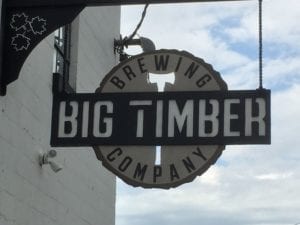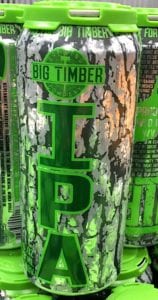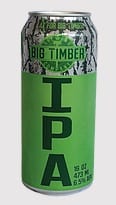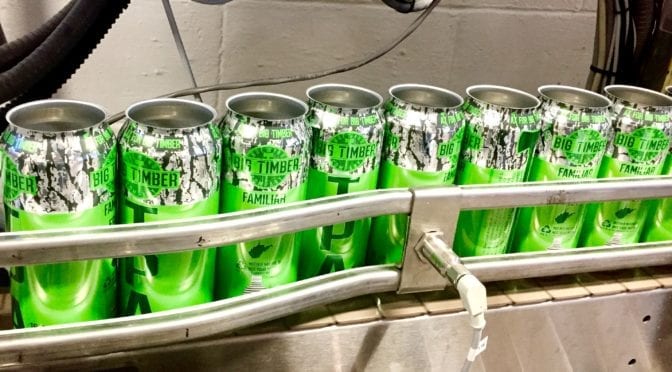
Canning day at Big Timber Brewing Company
June 8, 2017
Visiting on a canning day at Big Timber Brewing Company in Elkins, WV, is an adventure even for an experienced brewery visitor. Watching up-close as the amazing elixir moves from the big steel tank to fill all the little aluminum containers is a thrill.
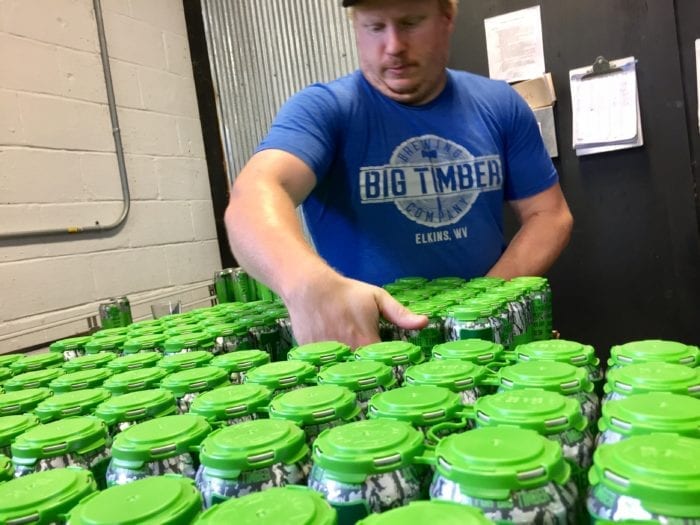
When a small brewery commits to packaging its beer in cans, it requires a lot of equipment and a lot of labor. The whole brewing team gets involved. It’s a pretty choreographed process. Cans are loaded into the mechanism where they proceed one-by-one down the line. Cans are filled with beer, lids applied and sealed, cans rinsed, and finally grouped into four-packs with a plastic carrier.
From this brewery’s inception, head brewer and brewery president Matt Kwasniewski always knew he wanted to put Big Timber beer in cans. Big Timber has now been canning for a couple of years.
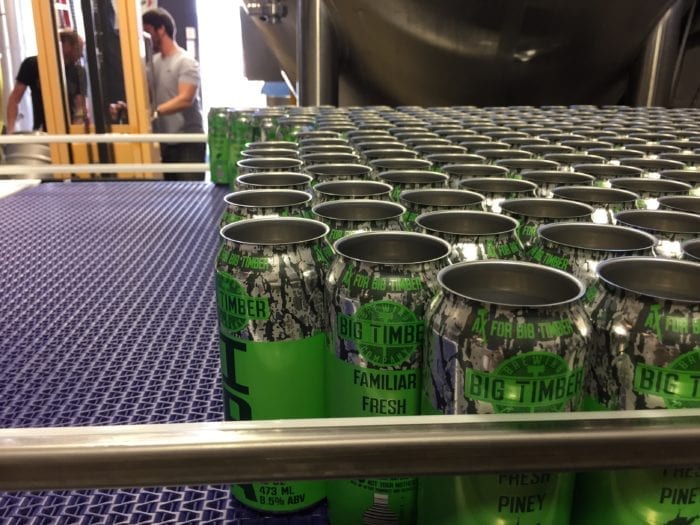
Kwasniewski provided these details about his canning process.
“We can about two days a week. It’s a 30 can-per-minute line, but because we do 16 oz cans we net about 26 cans per minute. We do almost 25 barrels a run. Right now, we can two varieties — our IPA and our Porter. We’ll add a third variety when we get into our new facility. That will be Logger Lager cans.”

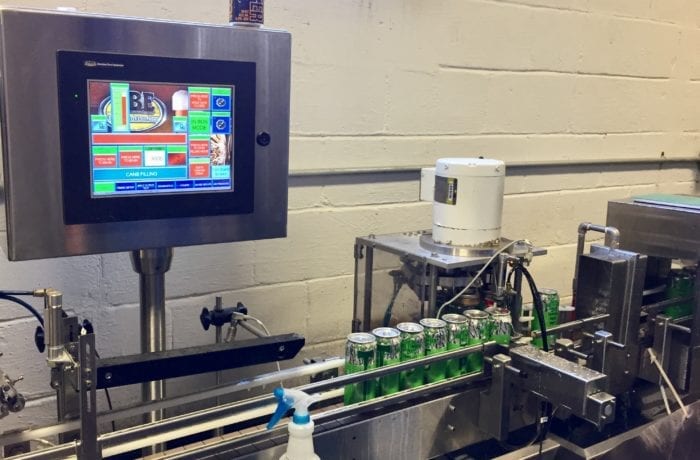

Canning a natural thing for Big Timber
Kwasniewski thinks canning fits well with the Elkins area’s outdoor recreation culture. Compared to glass bottles, he says cans have several advantages.
“As far as portability, it’s hard to beat a can. It’s less material for more product. Glass is hard to get rid of. It’s heavy. You’ve got to ship it in here and that’s expensive. So aluminum made sense. It’s easy to recycle, it’s light; it stores beer well.”
Kwasniewski chose the 16 oz can over the 12 oz one for a couple of reasons.
“You can hold it at the top and the beer stays cold at the bottom,” he says with a smile.
It also likes that it gives a bigger billboard in shelf sets.
“That’s a big thing,” he said.
He explained that with all the craft beer in the market today, it is hard to get more than one shelf facing of a particular package. The 16 oz can is about 33% taller than the more common 12 oz can, making it stand out and giving more visibility to the product.
New can labels: Bark out, treetops in
Also on the visibility front, Big Timber has been redesigning the look of its can labels. Kwasniewski thought his original tree-bark imagery looked nice, but from a distance, it was confusing and too hard to read. So the brewery is moving to a cleaner, more simple, bold typeface and new art that removes the bark and adds mountains and a tree line.
“The whole idea is that in your hand we want it to be interesting and intricate, but on a shelf it will be bold and stand out.”
They are still working on the artistic transition. The original bark-background can is pictured above on left. The current IPA can, shown in center above, is an intermediary step and will transition to a look more like their new Porter can. The bark background gives way to a line of treetops and mountains.
“We wanted a transition where the customer wouldn’t have to think twice,” he said.
Big Timber to add centrifuge
When Big Timber’s new facility becomes operational later this summer, the brewery will add a centrifuge to its production line. Kwasniewski believes the centrifuge will help them add even more quality to the beer.
“We filter our IPA for shelf stability and consistency,” he says, adding that the new centrifuge will take the place of filtration.
“They’re not cheap, but it was always somewhere we wanted to go.”
A centrifuge is basically a mechanical separator. It uses centripetal force to push out solids, such as yeast, tannins and proteins, from the liquid beer. This results in a clarified beer that is more shelf stable. A centrifuge also gives higher beer yield and decreases oxidation.
A centrifuge does not strip flavors from beer like a filter medium can. On the contrary, an added benefit of a centrifuge is that it also squeezes extra oils out of the hops, adding to aroma, flavor and hopping efficiency.
“I’d always like to boost the hop aroma in our IPA. but it’s hard to do if you’re going to filter,” he says.
It will be nice to see that centrifuge at work in their new brewery.
